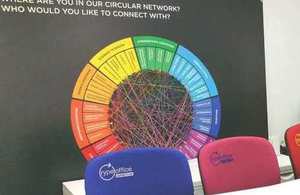£5,000 grant helps RypeOffice get low-carbon furniture to market
RBS, Imperial College and CarbonNeutral head growing queue of customers for London firm's remanufactured office furniture.

RypeOffice has won blue-chip customers for its eco-friendly, remanufactured furniture.
A London-based company that used Innovate UK funding in 2014 to develop a business plan for eco-friendly, remanufactured furniture has already landed blue chip customers.
Consulting firm identified the commercial potential of remanufacturing to produce quality office furniture at a lower cost and with less environmental impact.
The fledgling furniture business, named , had an early breakthrough with a Royal Bank of Scotland (RBS) award 바카라 사이트“ and that immediately paid dividends, as co-founder Greg Lavery explained:
is now one of our customers. has also purchased our furniture and we바카라 사이트™ve done an installation for .
Enormous opportunities
The company is in discussions with other organisations, large and small, as potential clients.
We바카라 사이트™ve been delighted with the response of the market. It seems as though we got our timing just right with increasing interest in the and sustainability more generally.
There바카라 사이트™s an enormous opportunity to remanufacture in society, taking away a waste stream, avoiding landfill, and reusing it as a new product.
Lavery/Pennell did not have an R&D budget for product-based initiatives so they turned to Innovate UK who offered a £5,000 grant. Greg added:
That meant we could engage a design firm who were brilliant with furniture. They were able to fill in the gaps in our knowledge and develop a business case that showed there was a real opportunity.
Rather than set up a factory, RypeOffice assembled a network of partners including specialists in powder coating, polishing and reupholstering.
Reduces environmental footprint by 80%
Long-life components in furniture, including steel and aluminium, have the greatest environmental footprint because they have been taken from the earth and refined and processed a number of times. These are also the most expensive because they are transported around the world through long supply chains.
But because they last a long time, they can be reused as the structure for a remanufactured piece of furniture, with new elements added around them to create a finished product indistinguishable from new.
Research has shown that remanufacturing reduces the footprint of an item in terms of greenhouse gas, water use and biodiversity damage, by around 80% compared to a product that has been made with virgin resources.